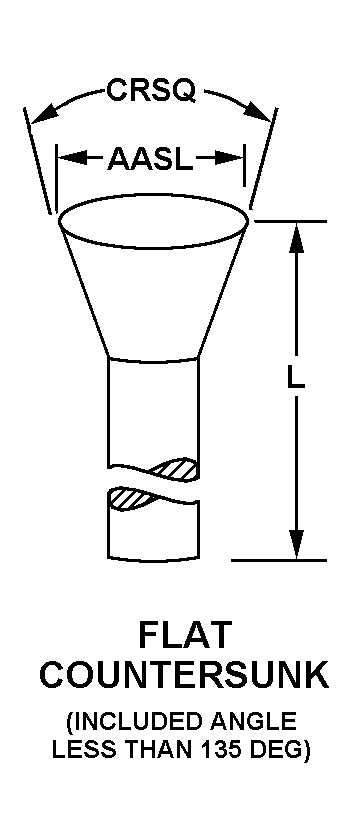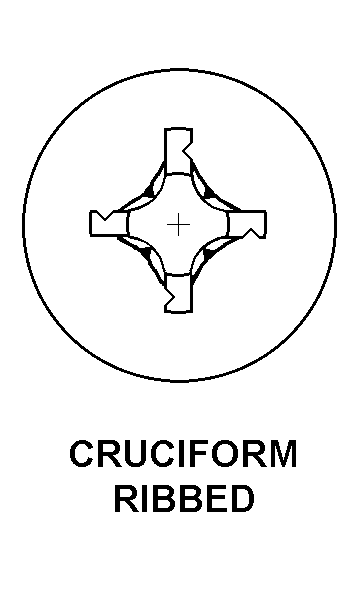5305016250888
Price Quote Get an up to date pricing and availability quote for this product. Order online or over the phone.
Quality Commitment
Serving our customers with quality and safety first.
- AS9120 Certified
- Audited supply chain
- ITAR Registered
- DDTC Registered
- HAZMAT Certified
- Customer service objectives
- Every product 100% inspected

5305-01-625-0888 Specification Set by the OEM (see RNCC code 3)
3a
RIGHT-Hand
0.438in. ⁓29/64"
1.548in. and 1.578in. ⁓1-37/64"
flat countersunk
0.429in. and 0.477in.
0.3110in. and 0.3120in.
0.076in. and 0.081in. all holes
cruciform ribbed
0.3125in. ⁓21/64"
1.115in. and 1.135in.
24
99.0 degrees and 101.0 degrees
steel comp 4140 or steel comp 4340 or steel comp 8740
AMS6382 assn std 1st material response or AMS6415 assn std 2nd material response or AMS6484 assn std 2nd material response or AMS6322 assn std 3rd material response or AMS6325 assn std 3rd material response or AMS6327 assn std 3rd material response
cadmium
AMS-QQ-P-416, type 2, class 2 assn std single treatment response
unjf
Cross Reference Parts Part numbers that meet the specification outlined on this page and set by the OEM
Identification Item Identification Guide (IIG) and Item Name Code (INC)


Definition Definition of approved item name (AIN): "SCREW,CLOSE TOLERANCE"
A screw, machine or screw, cap, socket head whose unthreaded portion is of specified grip length, plated or unplated, and is machined to a tolerance of one thousandth (0.001 in.) (0.025 mm) or less of a specific diameter for items (1.000 in.) (25 mm) or less in diameter. Items over (1.000 in.) (25 mm) in diameter shall have a tolerance of fifteen ten thousandths (0.0015 in.) (0.038 mm) or less. The nominal major diameter of the threads shall be at least one thousandth (0.001 in.) (0.025 mm) below the minimum shank diameter, but not below the minimum major diameter for applicable class of fit, as shown in the screw thread standards, fed std h28 and/or other nationally recognized standards. The head is designed to be held or driven with an inserted driver. It is not designed for rotation by the thumb and fingers. A locking feature may be incorporated in the design of the head or threads.
Packaging & Dimensions Packaging instructions, special markings, and approx. weight/dims
Packing shall be accomplished to meet the performance test requirements of astm-d4169, distribution cycle 18, assurance level 1.
Packing shall be accomplished in accordance with table c.ii for the packing level specified. closure, sealing and reinforcement shall be in accordance with the appropriate shipping container specification.
Options can be exercised as to specific method of preservation or dod approved packaging materials to be used. however, basic preservation method shall be retained, supplemental data shall be complied with, and unit package dimensions shall not be increased by more than one inch. equal or better protection shall be given the item and there shall be no increase in the package cost.
No special marking.
Packaging Codes
OPI: Optional Procedure Indicator Code. A one position alpha code that indicates the allowable deviations from the prescribed requirements.
SPI No.: Special packaging instructions number.
LVL A/B/C: Indicates the type of shipping container required for level A, B, or C maximum packing protection.
SPC Mkg: A two position code that identifies the special markings applied to the container, which is part of the total pack to protect the contained item during preservation, packing, storage, transit and removal from the pack.
5305-01-625-0888 Material Hazmat, Precious Metals, Criticality, Enviroment, and ESD
Indicates there is no data in the hmirs and the nsn is in a fsc not generally suspected of containing hazardous materials.
Item does not contain precious metal.
Represents items with no adp components
The item does not have a nuclear hardened feature or any other critical feature such as tolerance, fit restriction or application.
Identification Codes
HMIC: Hazardous Material Indicator Code. A one position code that identifies a hazardous item.
PMIC: Precious Metal Indicator Code. A one position code which identifies items that have precious metals as part of their content. precious metals are those metals generally considered to be uncommon, highly valuable, and relatively superior in certain properties such as resistance to corrosion and electrical conductivity.
ESD: Electrostatic Discharge. Indicates if an item is susceptible to electrostatic discharge or electromagnetic interference damage. electrostatic discharge damage occurs when an accumulation of static electricity generated by the relative motion or separation of materials is released to another item by direct contact. electromagnetic interference damage occurs when an item comes into proximity with an electrostatic or magnetic field.
ENAC: Enviromental Attribute Code. Identifies items with environmentally preferred characteristics.
CRITL: Criticality Indicator Code. Indicates an item is technically critical by tolerance, fit, application, nuclear hardness properties, or other characteristics.






